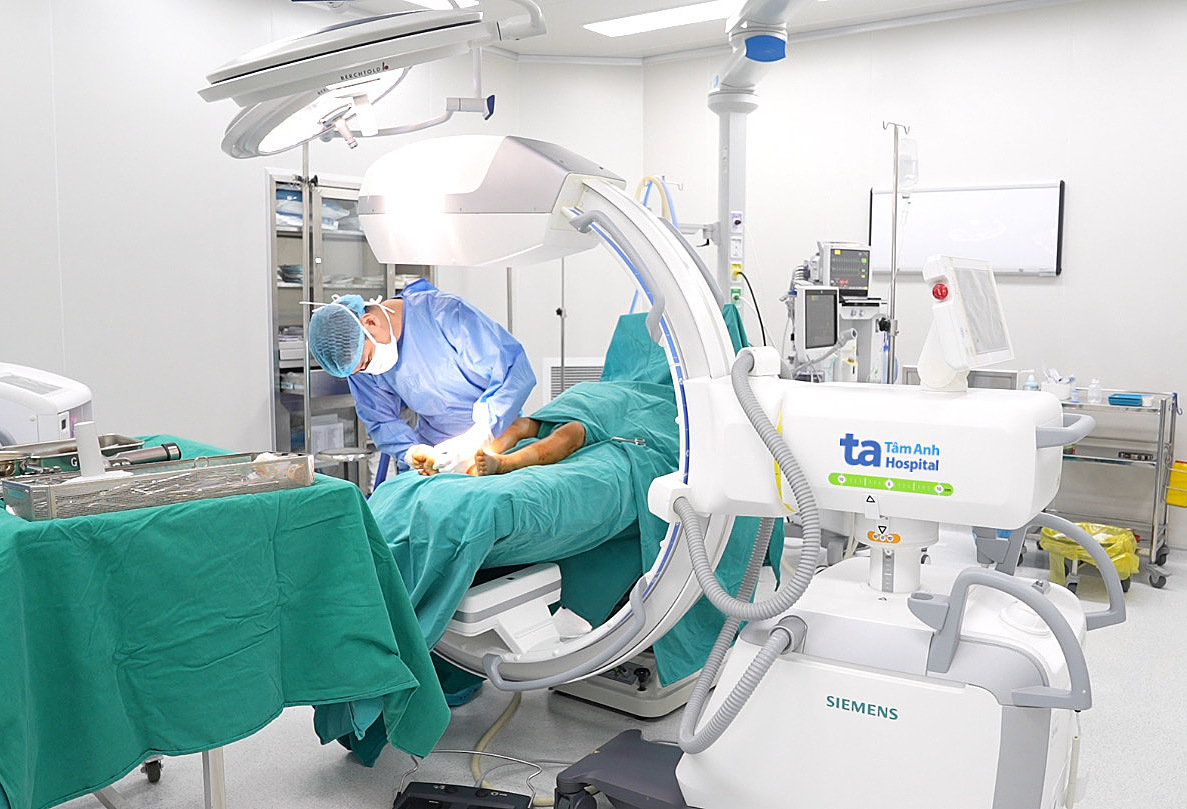Flat foot is a condition where the sole of the foot (the arch) is flat, lacking the natural upward curve when standing. This not only makes walking and running difficult but also leads to misalignment from the ankle to the knee joint, increasing the risk of osteoarthritis and potentially negatively impacting the spine in the long run. Corrective surgery can reduce pain, reconstruct the arch, and improve foot function.
Tran Van Dan, head technician of the Rehabilitation Department at Tam Anh General Hospital in Hanoi, explains that after flat foot corrective surgery, proper and complete exercise is key to pain reduction, arch reconstruction, and long-term stability. Studies show that an exercise program combining foot, calf, and hip muscles is highly effective.
Dan recommends several exercises that can be done at home to strengthen the arch, improve balance, and accelerate recovery.
Calf stretches
This exercise focuses on stretching the Achilles tendon (heel cord) and calf muscles, reducing foot strain and supporting arch recovery after surgery. Stand facing a wall with your hands at shoulder height. Step one foot forward, keeping the knee slightly bent. Extend the other leg back, keeping the knee straight and the heel on the ground. Gently lean towards the wall until you feel a stretch in the calf of the extended leg. Hold for 20-30 seconds and repeat 2-3 times for each leg.
Toe raises
This strengthens the small muscles in the forefoot, directly supporting the arch's ability to lift. Sit on a chair with your feet flat on the floor. Keeping your heels on the ground, slowly lift all your toes as high as possible. Hold for a few seconds and then slowly lower them. Repeat 3 sets of 10-15 repetitions for each foot.
Foot rolling
Rolling a ball under the foot releases tension in the sole, increases local blood circulation, and improves arch flexibility. This is an effective self-massage technique, especially useful post-surgery when soft tissues are stiff or lack flexibility. Sit on a chair and place a tennis ball or spiky ball under your foot. Slowly roll the ball from heel to toe and back, applying moderate pressure. Focus on the arch and any tight spots. Do this for 2-3 minutes for each foot.
Arch lifts
This exercise activates and develops the deep muscles under the foot, improving the arch quickly and sustainably. Sit or stand with your feet on the floor. Try to lift the arch of your foot off the floor without lifting your toes or heels. Imagine pulling your toes towards your heel without lifting your foot. Hold for 5-10 seconds, then relax. Repeat 3 sets of 10-15 repetitions for each foot.
 |
A doctor performing flat foot surgery. Photo: *Tam Anh General Hospital* |
Toe pickups
This exercise improves dexterity and strengthens toe and foot muscles, enhancing sensation and movement after surgery. Sit on a chair and use your toes to pick up small objects from the floor, placing them in a cup or box next to you. Do this for 2-3 minutes for each foot.
Heel raises with a step
This strengthens the entire leg while encouraging arch stability when bearing weight during recovery. Place a small step about 10-15 cm high in front of you. Stand upright and step one foot onto the step, ensuring your entire foot is on the step with your arch well supported. Raise your body until the leg on the step is straight, then slowly lower your foot to the floor. Repeat 3 sets of 10-15 repetitions for each leg.
Dan advises starting with low intensity, 3-4 times a week for safety. If pain exceeds a moderate level, reduce the intensity or stop and consult a specialist. Use arch support shoes or orthotics as directed. Maintain a balanced diet, get adequate rest, and avoid smoking and alcohol.
Anh Kiet
| Readers can submit questions about musculoskeletal diseases here for doctors to answer. |












